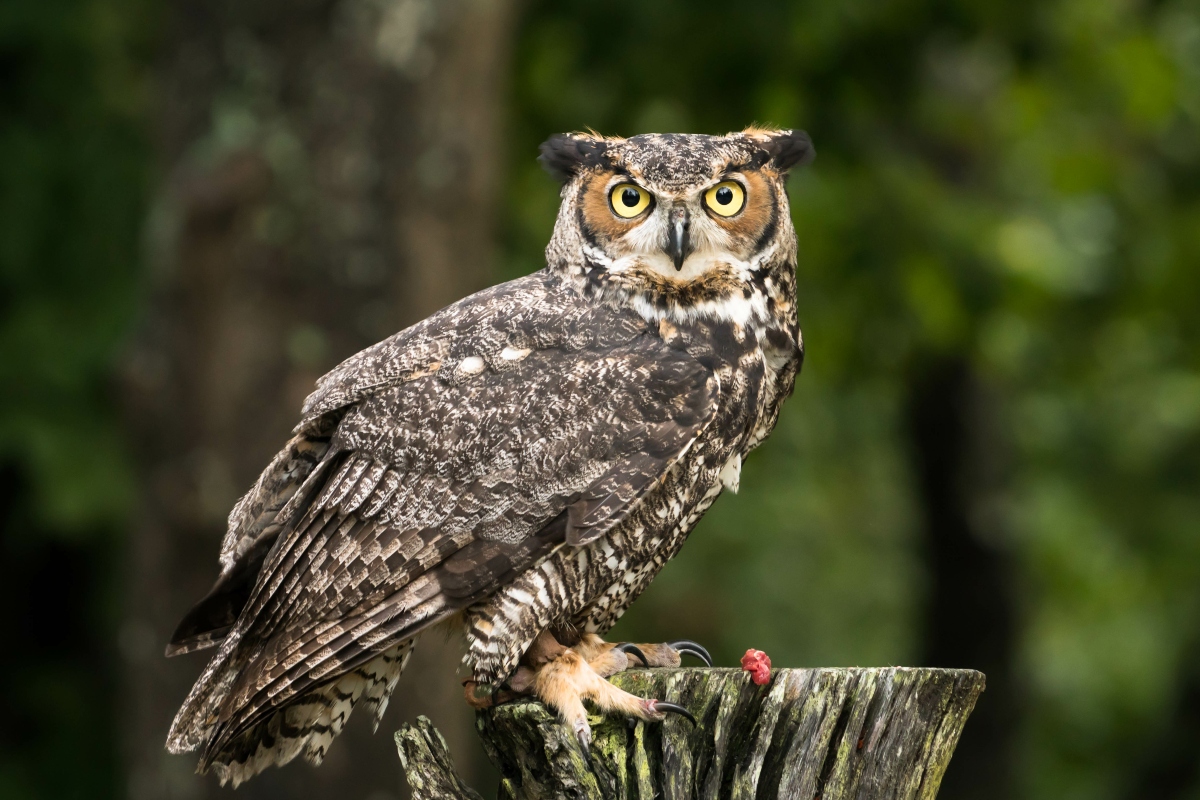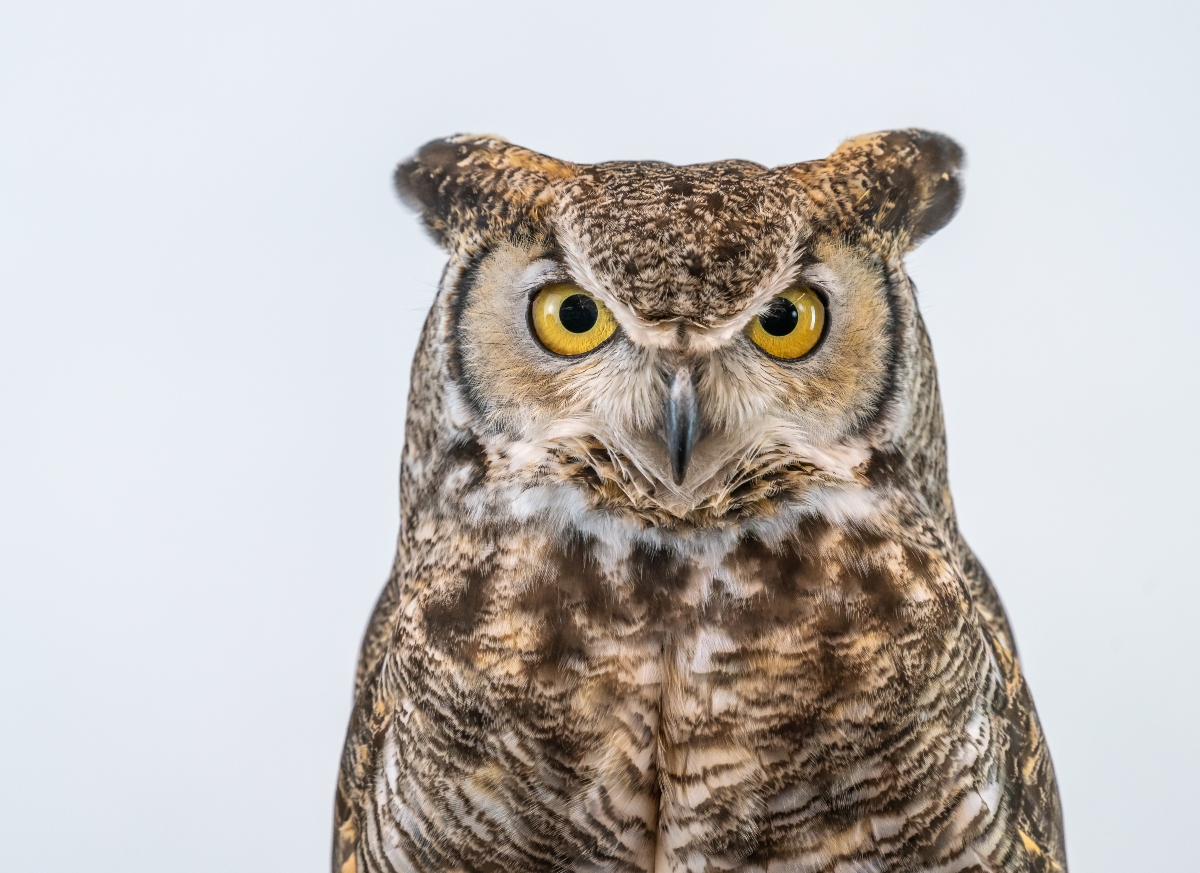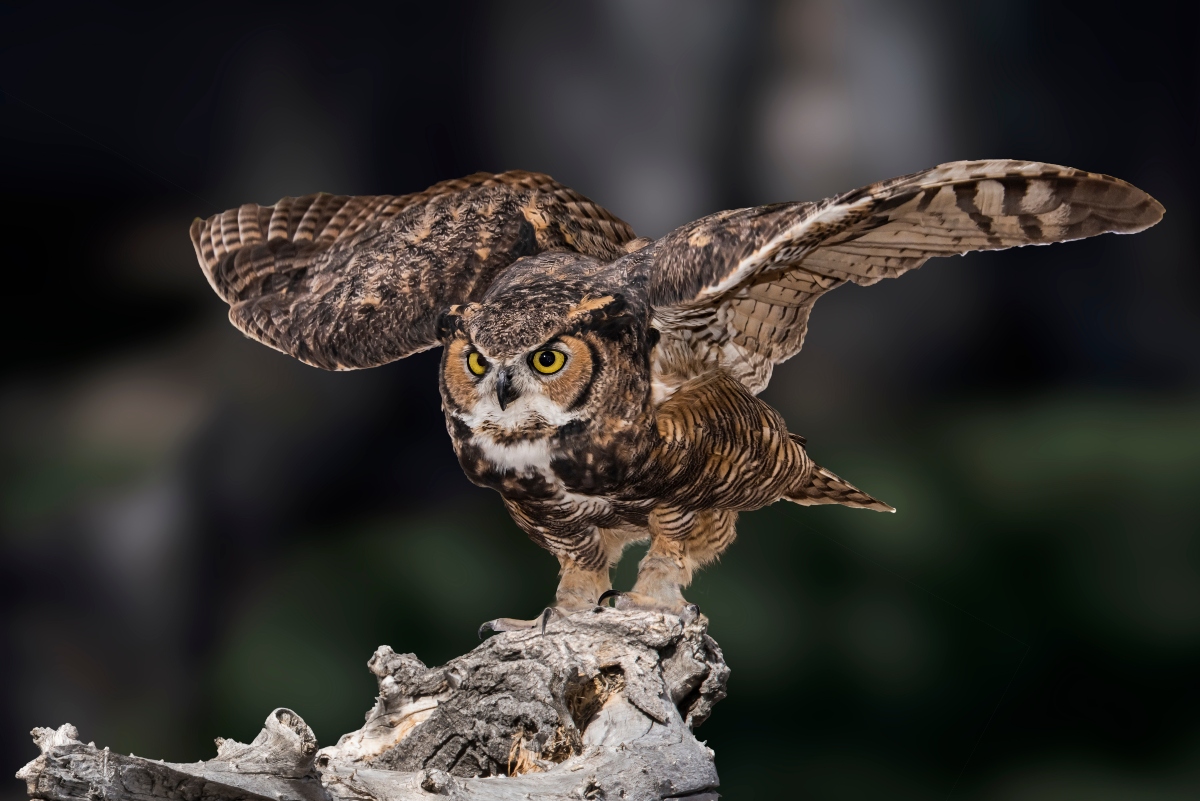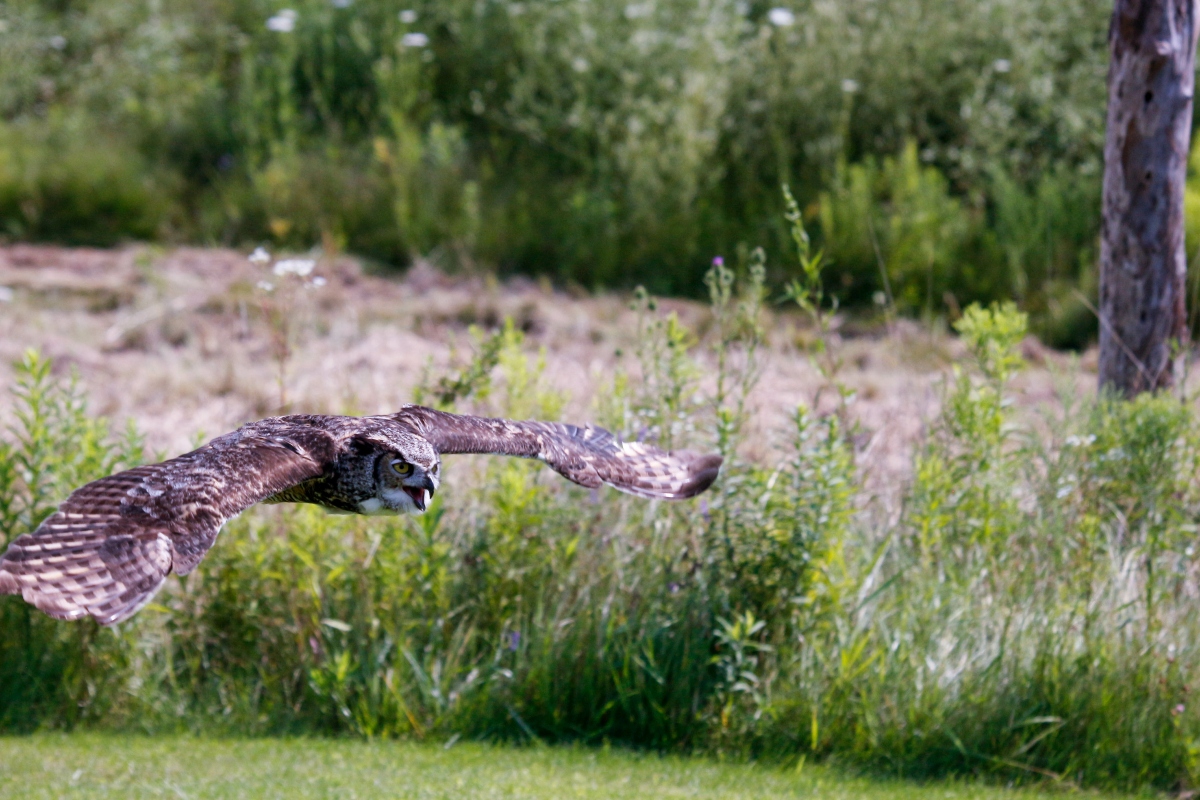The Great Horned Owl, scientifically classified as Bubo virginianus, is a powerful and captivating bird that reigns supreme in the nocturnal realms of the Americas. Its imposing figure and silent flight have made it a creature of lore, a symbol of wisdom and mystery in many cultures. This master predator’s grace and prowess in the night sky hold a timeless fascination for bird enthusiasts and nature lovers alike.

Boasting a robust physique, the Great Horned Owl typically measures between 18 to 25 inches in length, with a wingspan stretching from 3.3 to 4.8 feet. Its feathers form a rich tapestry of mottled brown, white, and grey hues, providing the perfect camouflage in its woodland habitats. The Owl’s most striking features are its tufted ears or “horns”, which bestow a regal and somewhat imposing appearance, and its deep yellow, piercing eyes which are capable of keen sight during the night.
Predominantly found across North and Central America, the Great Horned Owl’s adaptability has allowed it to thrive in a variety of environments, from dense forests to city parks. This resilience is a testimony to its versatile diet, which includes a wide spectrum of prey, such as rodents, rabbits, birds, and even reptiles.

The hunting technique of the Great Horned Owl is a testament to its power and precision. Its flight is almost silent, thanks to the specialized serrated edges on its primary feathers, allowing it to swoop down on prey unnoticed. The Owl’s talons are another formidable weapon, capable of exerting a crushing force that instantly incapacitates its quarry.
Breeding and nesting are remarkable aspects of its life cycle. Unlike other birds, Great Horned Owls do not build nests, instead preferring to take over abandoned nests of other large birds. The female is chiefly responsible for incubation, nurturing a clutch of about 1 to 5 eggs. During this period, the male assumes the role of a vigilant guardian and provider, fiercely protecting the nest and supplying food.

Despite being at the top of the food chain, the Great Horned Owl faces threats such as habitat destruction, human-wildlife conflict, and climate change. Conservation initiatives aiming to protect natural habitats and raise awareness about the species are crucial to its survival.
Throughout history, the Great Horned Owl has held a significant place in folklore and mythology, often depicted as a symbol of knowledge, intuition, and a messenger of secrets. Its hooting call, echoing in the stillness of the night, adds a profound depth to its mysterious persona.

Observing the Great Horned Owl in its natural habitat offers a thrilling experience, providing a glimpse into the nocturnal world that remains elusive and enigmatic. As a guardian of the night, the Great Horned Owl continues to captivate the imagination, fostering a deeper appreciation for the rich and diverse avian life that graces our planet.